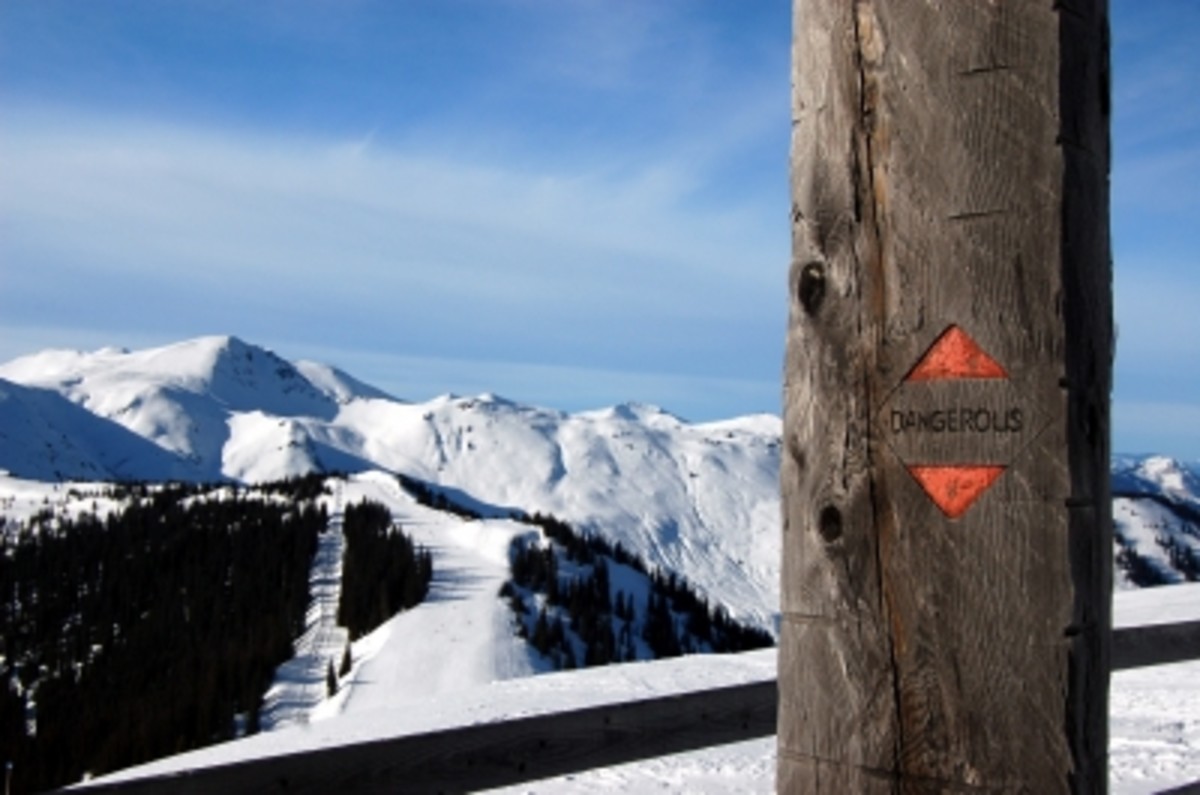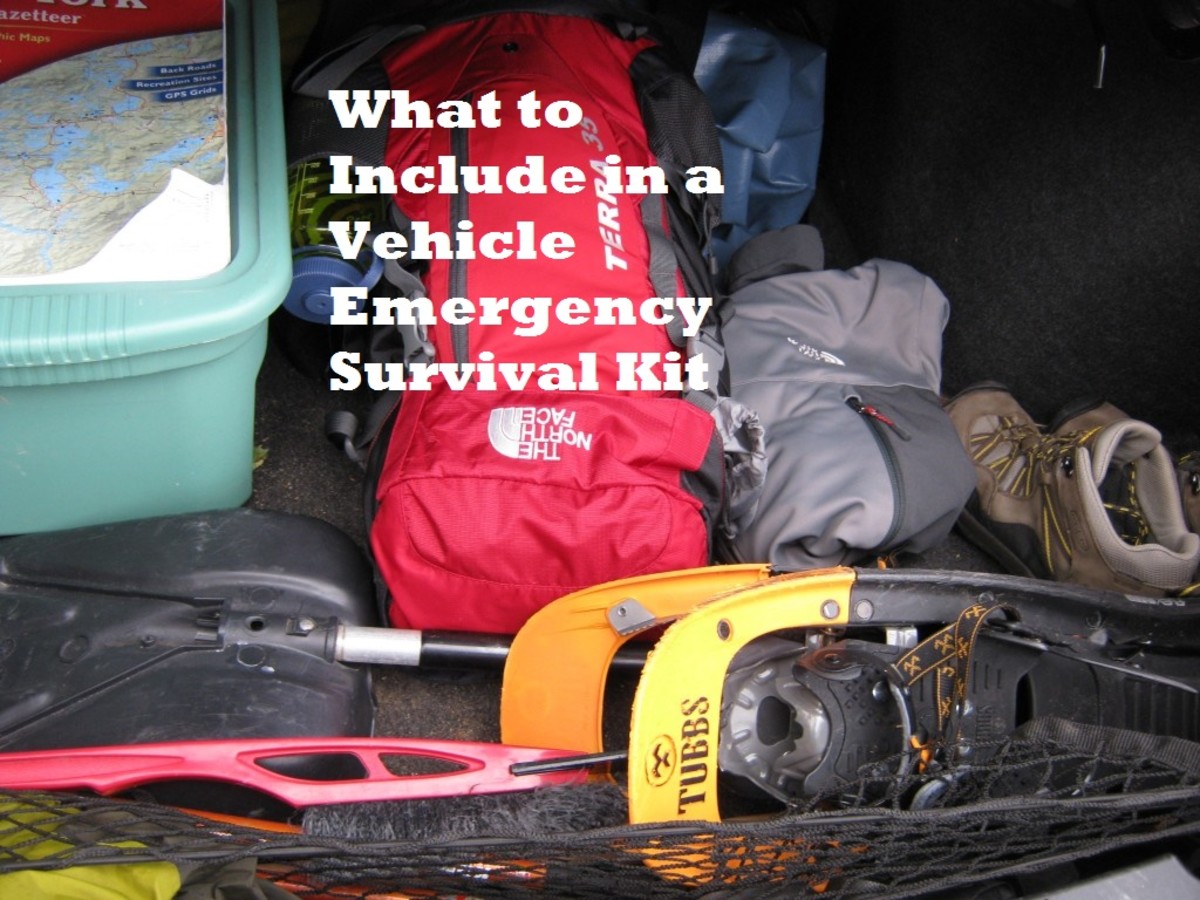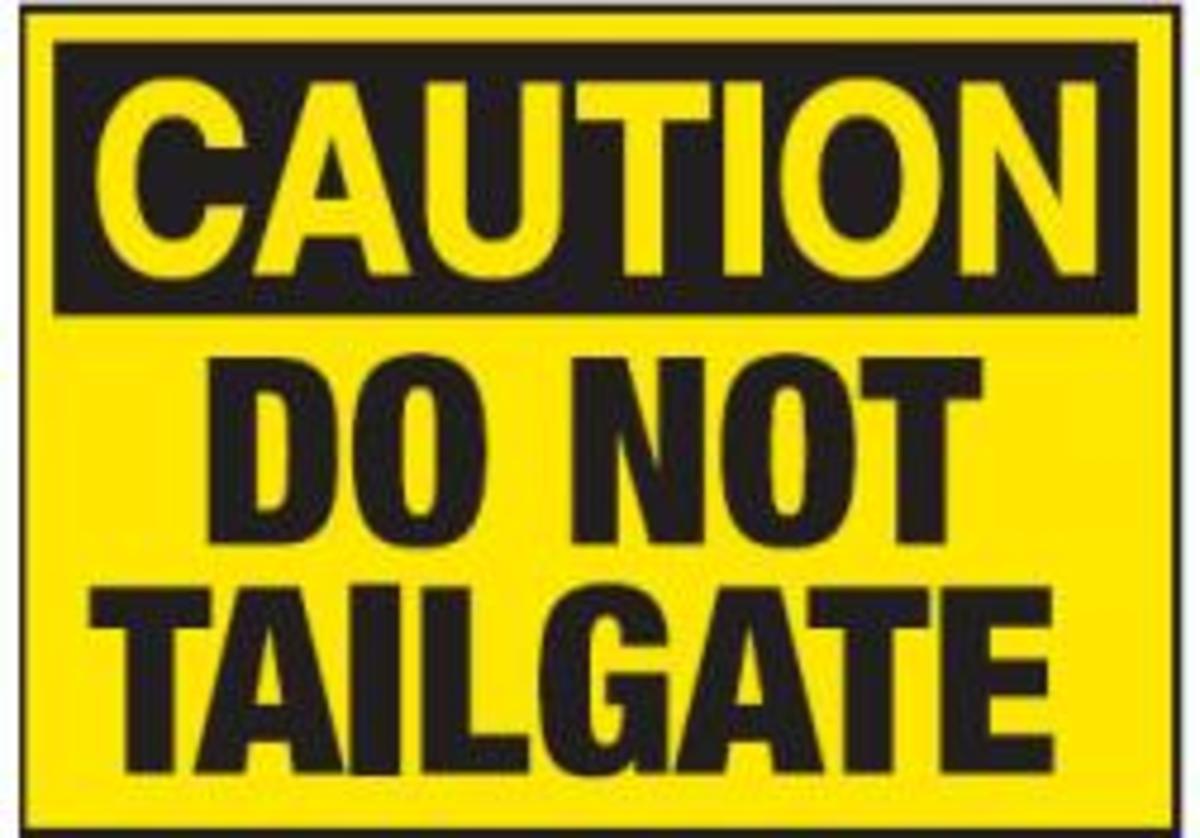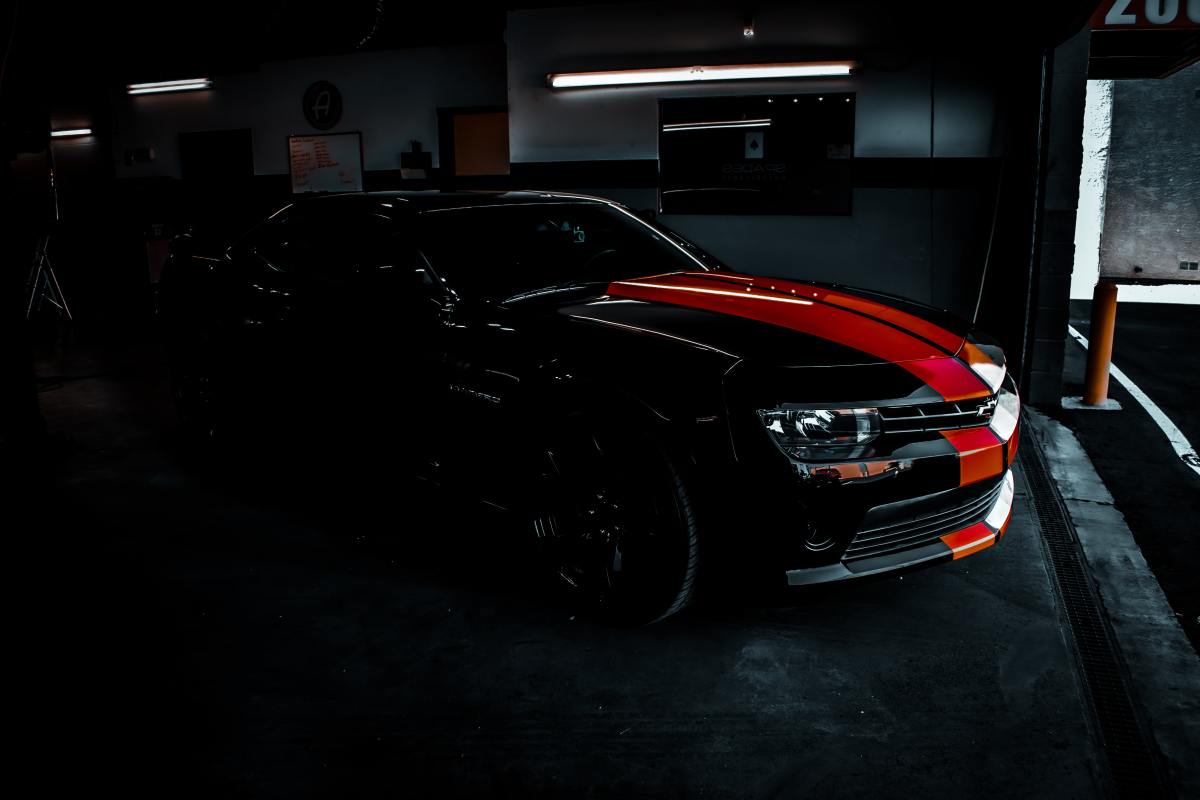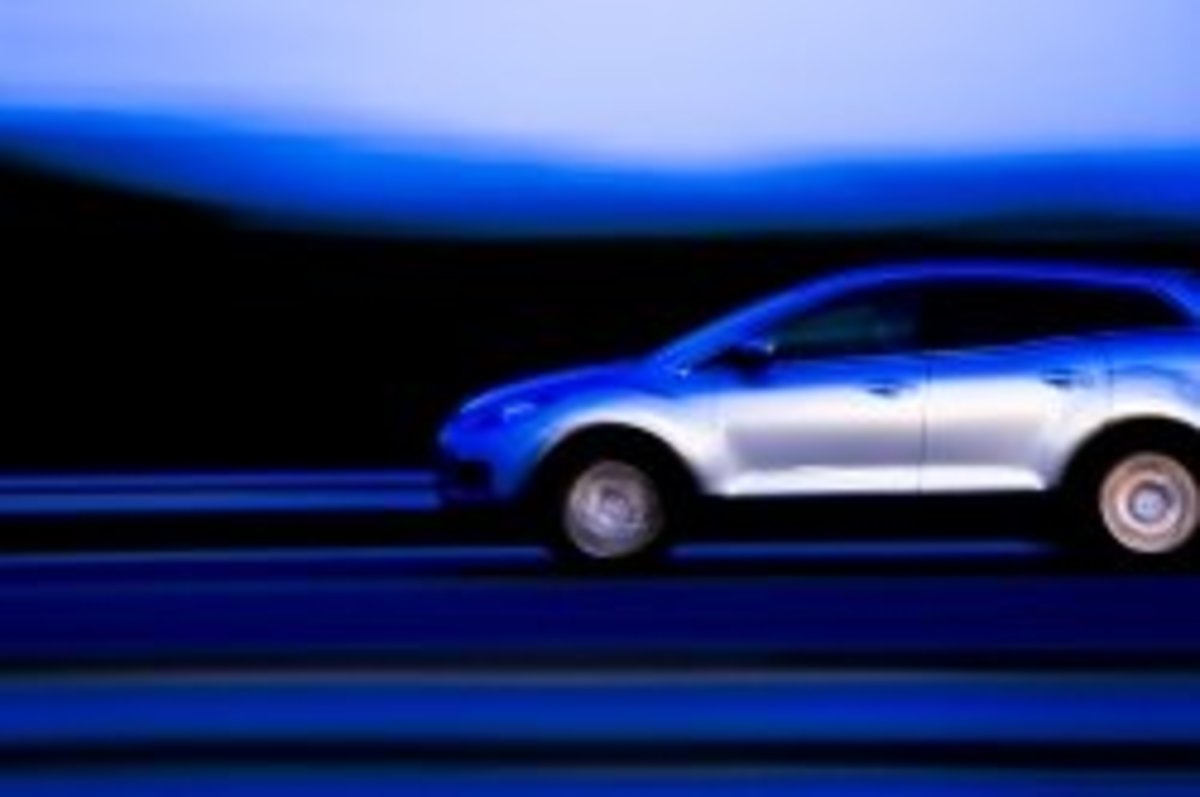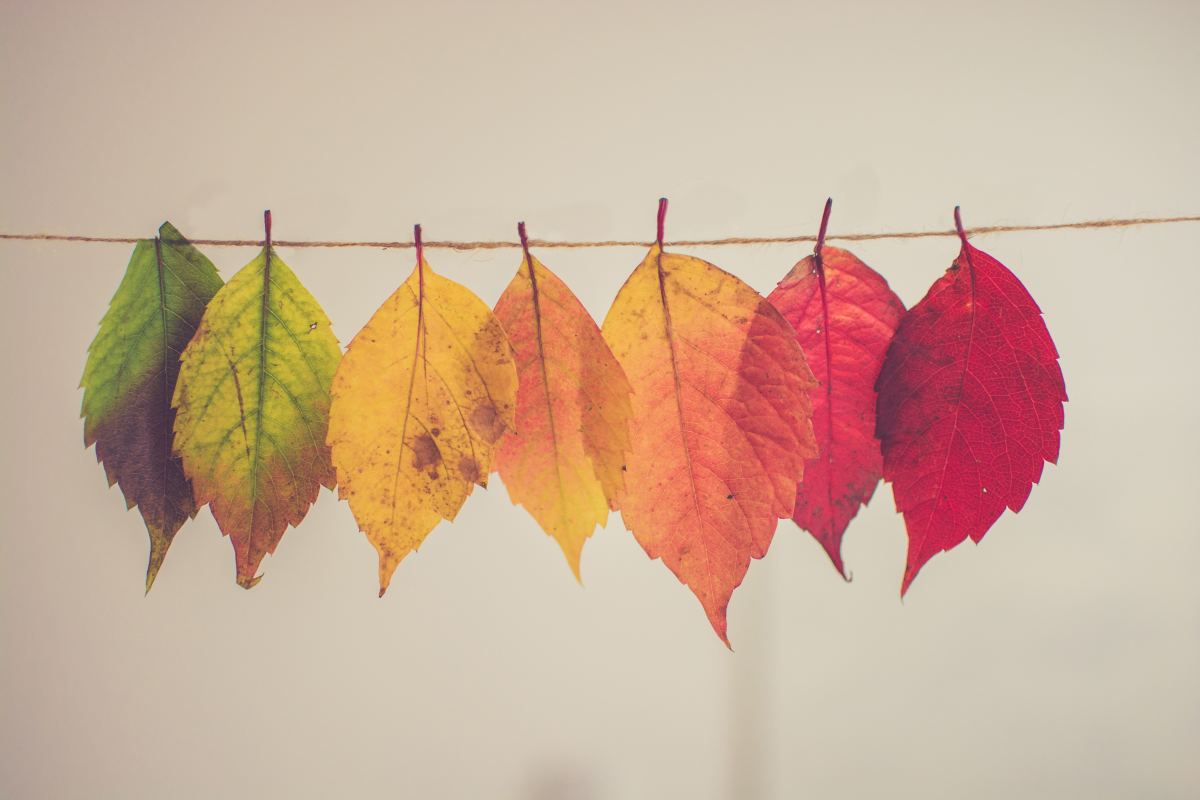Winter Driving With Puddles On the Road
It Doesn't Snow Everywhere
There are many, many articles written about how to drive in snow and ice. That is because there are many, many places where snow and icy road conditions are common in winter and early spring.
I do not live where it snows, and I never have, so I have no experience in that area, and am not qualified to address the topic.
Where It Doesn't Snow, It Rains
Yes, Virginia, it does rain in the winter in many places. Where I live snow is a rare bit of freak weather. Rain is the expected nastiness during our winters.
Just as with snow, there are certain driving precautions that must be taken to prevent accidents. Most of us by now have heard of the term "hydroplaning." This is what happens when a thin layer of water serves as what you might call a lubricant between the tires and the road. It is no less hazardous than sliding on ice.
The worst thing you can do is to slam on your brakes. Instead, hold tight to the steering wheel and counter-steer if you start to slide, but do so gently. The key is not to make sudden, jerky moves.
There are rain-rated tires, whose treads do a better job of funneling excess water out to the sides instead of allowing a floating action to happen. Many every day all-purpose tires can be found with a rain-handling rating or capability; there are many rated as "all season," (but those are probably not suitable for snow country). In any case, buy the best ones you can afford; it could mean your life.
Motorcycle riders, in particular, should select a good rain-rated rear tire. But, not being a motorcycle rider myself, I won't go into that further, Suffice it to say my ex-husband rode, and I learned certain things such as this second-hand.
Puddles, Those Great Big Puddles!
Ah, who hasn't dreamed, or possibly tried, driving through a huge puddle, to see their car throw up rooster tails of water nearly as grand as might a jet ski on a lake?
Well, maybe some have even done so. It might seem like great fun, but is not so funny to the person waiting for a bus who gets drenched by your road wake, nor is it so funny for the kids walking to school who have to start their school day soaking wet.
I don't want to be a killjoy, but there are many very serious reasons to avoid indulging in this behavior.
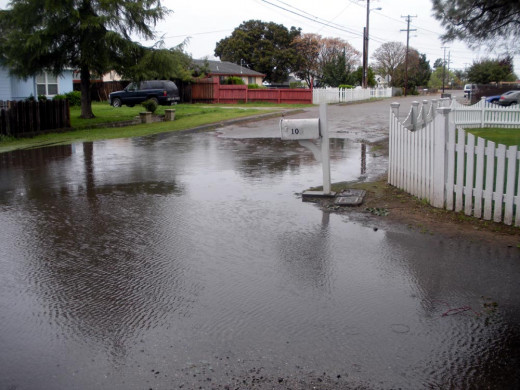
Your Own Safety
Driving through deep puddles can cause malfunctions with your own car. You don't want to have any of these things happen:
- loose your brakes because your braking surfaces are wet and slippery
- break an axle or steering arm on a hidden chuck-hole
- get a flat tire, or pop the tire bead off the wheel rim, leaving your tire dislodged
- kill your engine, leaving you stranded in the middle of the puddle
- have the stopping action of the water rip the steering wheel from your grasp
- stop suddenly (unintentionally) and get rear-ended
That's right--any and all of these things are possible, and the deeper the puddle, the bigger the risk. And the faster you are traveling when you hit, the bigger the danger.
That last one on the list very nearly happened to me one winter!
I was navigating a tricky section of freeway, and the way the lanes merged, disappeared, and exited made it a challenge even in good weather to get to the exit I needed, even though I knew where it was, and was as near the proper lane as possible
It had been raining the proverbial cats and dogs just before, and just as I turned back to the road from checking yet again over my shoulder for traffic in the lane I needed, there it was--a gargantuan puddle I had no chance to avoid. In I went, and out I nearly did not come! The engine coughed, sputtered, nearly died! I managed to nurse it along and get to a safe spot at the edge of my exit.
That puddle was deep! It came all the way up to the bottom of the doors, and my daughter and son-in-law in the back seat had wet feet! The carpet got soaked, and was ruined. I got it dried out, but it never fit right again. But that was my lucky day! Hitting water that deep at freeway speed (even reduced freeway speed for a rainy day), it could have been so much worse.
You see, when your car, traveling along at 55 mph hits standing water, it's almost like hitting a wall, or standing on your brakes. Your forward momentum is almost instantly halted: your speed will drop drastically in a matter of a second or two. So, from 55 mph down to say 10 or 15 is a pretty hard and fast slowdown, and if not for seat belts, you might well hit your head on the windshield--or the back of the front seat if you're in the back.
For the Health of Your Car
In the above-described scenario, both the car and the people are at risk. Had I been unable to keep my engine running, I would have been stranded in the middle of that puddle on the freeway, at very grave risk. The car probably would have needed at least a tune up, probably more.
Now, if you are in an area you don't know well, you have no idea what is under that standing water. It could be a large chuck hole, and you could drop in a wheel, breaking an axle or part of your steering controls. Neither is an inexpensive repair.
If your tire should blow as a result, or even come off the rim, you'd be stuck needing to change a tire--but where? What if your engine died as well? The water damage to the carpet such as I had would be the very least of your worries.
Even if you are in a familiar area, you don't know what new damage the current rains may have caused. There could be a chuck hole that wasn't there a week ago, or even yesterday. We've all seen stories on the news of huge sinkholes suddenly opening up in the road. You sure don't want to drive your car into a brand-new lake and be swallowed up!
Liability
Many people do not know that if you cause damage with water, you are responsible for said damage. It is a very common law of boating, although many people who drive boats don't seem to know or care. But there are areas that are called "no-wake zones," where you must drive your boat at 5 mph or less, to avoid washout damage to levees, sensitive riverbanks, or other people's boats in a harbor. If you violate the speed, and your wake (that's the churning water you see following a boat's path) causes any such damage, you can be cited by the Coast Guard.
A similar rule applies on the road. If you speed through a large puddle, even if you don't suffer any damage, a puddle that big will have a ripple and wake effect. If there is resulting damage to surrounding properties, such as washout of soil from a front yard; undermining a mailbox or garden statuary causing them to topple, you are liable for that damage! If the property owner gets your license plate number--you could find yourself in court.
Drying Out
Lets say the worst happens, as it did with the example I gave earlier. Now what? Well, if you're lucky, and your engine didn't die, keep driving. The engine's heat will dry out the parts that got wet and threatened to halt you in your tracks.
Also, you want to dry out your brakes so you'll be able to stop when you need them. To do this, pull onto a side road or at least off the freeway. You want to be in an area with minimal traffic, so as not to annoy or create a hazard for other drivers.
What you want to do, and what you should never do at any other time, is to 'ride' your brakes as you drive along for a block or two. Do not exert full braking pressure; simply allow your foot to rest on the brake pedal enough to depress it a little bit. This will partially engage the brakes without stopping the car. The combination of this friction with the continued forward motion of your driving will cause enough heat to dry the worst of the moisture from the braking surfaces, allowing you to be able to stop safely again.
This is somewhat less of a problem with disc brakes, but if the puddle was big and bad enough, you can still help the drying process by this method. If you have an older car with drum brakes, you will need to use this technique, or you could be in trouble when you need to stop the car.
Prevention, As Always, Is Best
If at all possible, then, avoid driving through large puddles. If you cannot see the street surface through the puddle, it's deep enough to cause concern. If possible, avoid it by going around the block and down another street.
If unavoidable, such as the one in my photo, as the puddle is the entire width of the street, and people need to get to their homes, then the approach is to drive very, very slowly through. And I mean slow. Walking speed or less; slow to a crawl. That way, you won't raise a wake that can splash up and damage your car or neighboring properties.
And chances are, you'll avoid having an angry pedestrian looking for a brick to aim at your car window. Stay safe out there!


